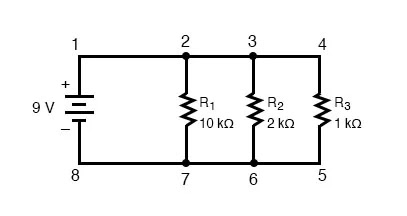Single Phase Ac parallel circuit Introduction: A parallel circuit consists of two or more series circuits connected in parallel across...
Single Phase Ac parallel circuit
Introduction:
- A parallel circuit consists of two or more series circuits connected in parallel across the
Same supply as shown in fig.
- All these series circuits are called the branches of the Parallel circuit.
- Depending upon the way in which R,L,C are connected.
- We are going to study the analysis of such circuits.
Methods of solving Parallel AC circuit
When Impedance are joined in Parallel ,AC circuits can be solved by following methods
a) Vector or Phasor method
b) Phasor Algebra or complex method
c) Admittance method
The AC circuits ,in which no. of branches are connected in parallel, such that the voltage across
them is same, are called ac parallel circuits. Parallel circuits are used more often in practice as all
lighting and power circuits are constant.Voltage circuits and the loads/equipments are connected
in parallel.Total current supplied by the voltage source is equal to the phasor sum of the
individual branch currents.
Here two branches A&B have been joined in parallel across rms supply of V volts.
The voltage across two parallel branches A&B is the same, but currents thro them are different
This method is suitable only when parallel circuit is simple and contains two branches
Phasor Algebra
• In this method, voltages, currents and Impedance are expressed in the complex form(ie)
either in the rectangular (x+jy) or polar form r∠𝜃 .
• Since complex form includes both magnitude and phase angle, the solution of parallel
circuits problems can be obtained mathematically by using the rules of the phasor
algebra.
• This eliminates the need of phasor diagram
Admittance (Y): Admittance (Y):Admittance is defined as the ability of the circuit to carry (admit)
alternating current through it. It is the reciprocal of impedance Z
Its units is mho “ ℧” For parallel circuit consisting two branches having impedances Z1 and Z2 in parallel, the
equivalent impedance of parallel combination is given by,
where, Y is the equivalent admittance of the parallel circuit Y1 and Y2 are the admittances of the two branches respectively.
Conductance (G): It is defined as the real part of the admittance (Y). It is also defined as the ability of the purely resistive circuit to pass the alternating
current.
OR It is also defined as the ratio of resistance(R) to the square of the impedance(Z)
Admittance (Y): Admittance (Y):Admittance is defined as the ability of the circuit to carry (admit)
alternating current through it. It is the reciprocal of impedance Z. Its units is mho “ ℧” For parallel circuit consisting two branches having impedances Z1 and Z2 in parallel, the
equivalent impedance of parallel combination is given by,
Conductance (G): It is defined as the real part of the admittance (Y). It is also defined as the ability of the purely resistive circuit to pass the alternating
current.
OR It is also defined as the ratio of resistance(R) to the square of the impedance(Z2
). In general, Conductance, siemen. Its unit is siemen (S). Susceptance (B):Susceptance is defined as the imaginary part of the admittance. It is expressed as, In DC circuit, the reactance is absent, hence X = 0 and susceptance equals to zero. It is imaginary part of the admittance (Y). It is defined as the ability of the purely reactive circuit (purely capacitive or purely
inductive) to admit alternating current.
OR It is also defined as the ratio of reactance to the square of the impedance.







No comments
Comment down